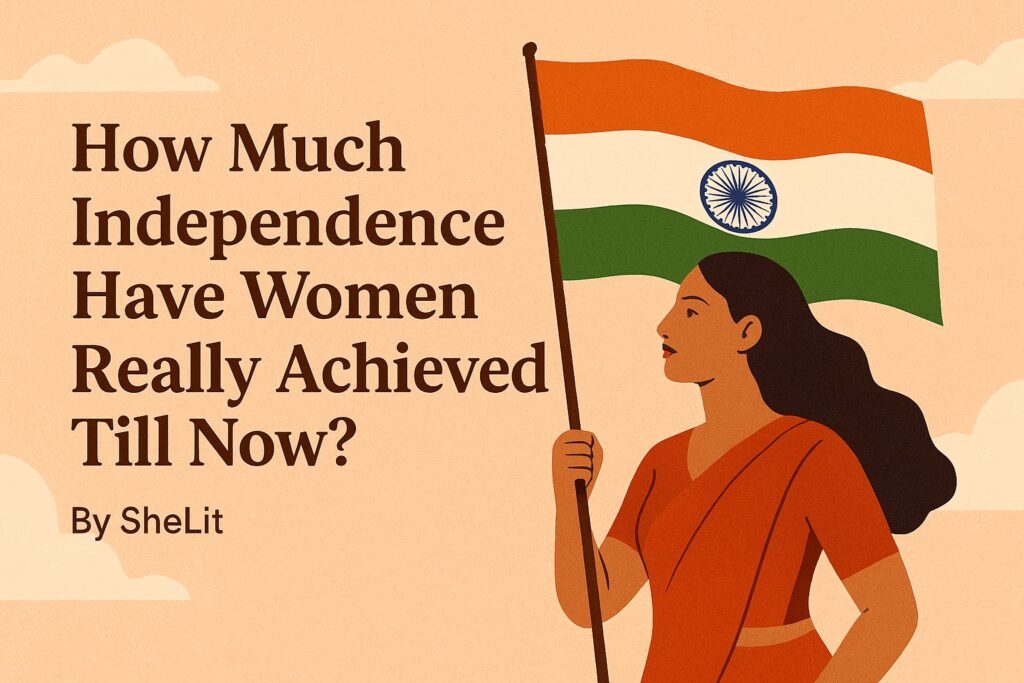By SheLit Team
Every year, on 15th August, the tricolour unfurls, and we celebrate the day India broke free from colonial rule. Speeches, parades, and patriotic songs fill the air. But amid this national celebration, one question echoes quietly — How much independence have India’s women truly gained?
From Political Freedom to Personal Freedom
In 1947, our nation took its first breath of freedom. The Constitution guaranteed equality for all — irrespective of gender. Women got the right to vote from the very beginning, unlike many Western nations where suffrage came decades later. This was a bold promise of equality.
Yet, political rights were only one part of the puzzle. For real independence, women need more than the right to cast a ballot — they need the freedom to walk without fear, to dream without limits, and to live without barriers.
Progress We Can’t Ignore
Let’s acknowledge the strides we’ve made:
- Education: Literacy rates for women have risen from around 8% in 1951 to over 70% today. More women are pursuing higher education than ever before.
- Workforce Participation: Women are leading companies, flying fighter jets, and shaping policy in Parliament.
- Legal Rights: Laws against dowry, domestic violence, and workplace harassment have strengthened women’s legal protection.
These are not small wins — they are the result of decades of struggle, activism, and resilience.
The Gaps That Still Exist
However, a closer look reveals cracks in this progress:
- Safety: Crimes against women remain alarmingly high, with reports of sexual violence and harassment still dominating headlines.
- Economic Freedom: Women’s labour force participation in India is among the lowest in the world, with many leaving jobs due to societal pressure or lack of workplace support.
- Social Barriers: Child marriage, gender stereotypes, and restrictions on mobility still limit countless women’s choices.
- Representation: While we see women in leadership, they are still far from equal in numbers compared to men in politics, corporate boards, and other decision-making spaces.
Freedom in the Truest Sense
Independence for women is not just about laws and opportunities — it’s about agency. It’s about a woman making her own choices without fear of judgment or violence. It’s about her right to say yes and no on her own terms.
We cannot call ourselves truly free if half our population still faces invisible chains — chains of patriarchy, prejudice, and power imbalance.
For women’s independence to be complete, we must:
- Invest in education and skill-building to create economic self-reliance.
- Enforce stricter safety laws and change societal attitudes towards gender.
- Promote equal representation in politics, media, and corporate spaces.
- Start grassroots conversations about consent, respect, and equality.
A Shared Responsibility
This Independence Day, let’s remember that freedom is not a gift to be given — it’s a right to be claimed and protected. The journey of women’s independence is far from over, and it demands the commitment of every citizen, regardless of gender.
True independence will be the day when every woman in India can live without fear, dream without limits, and thrive without barriers. Until then, our freedom story remains half-written.

